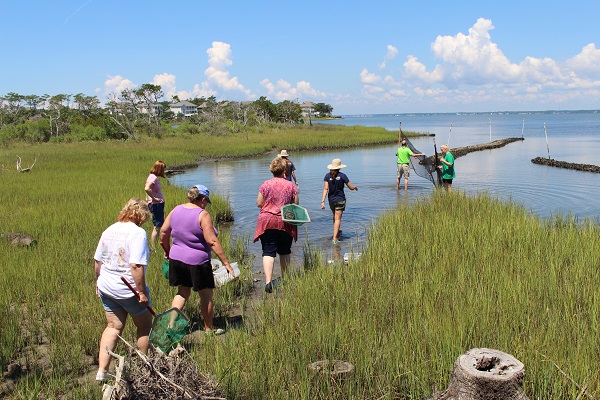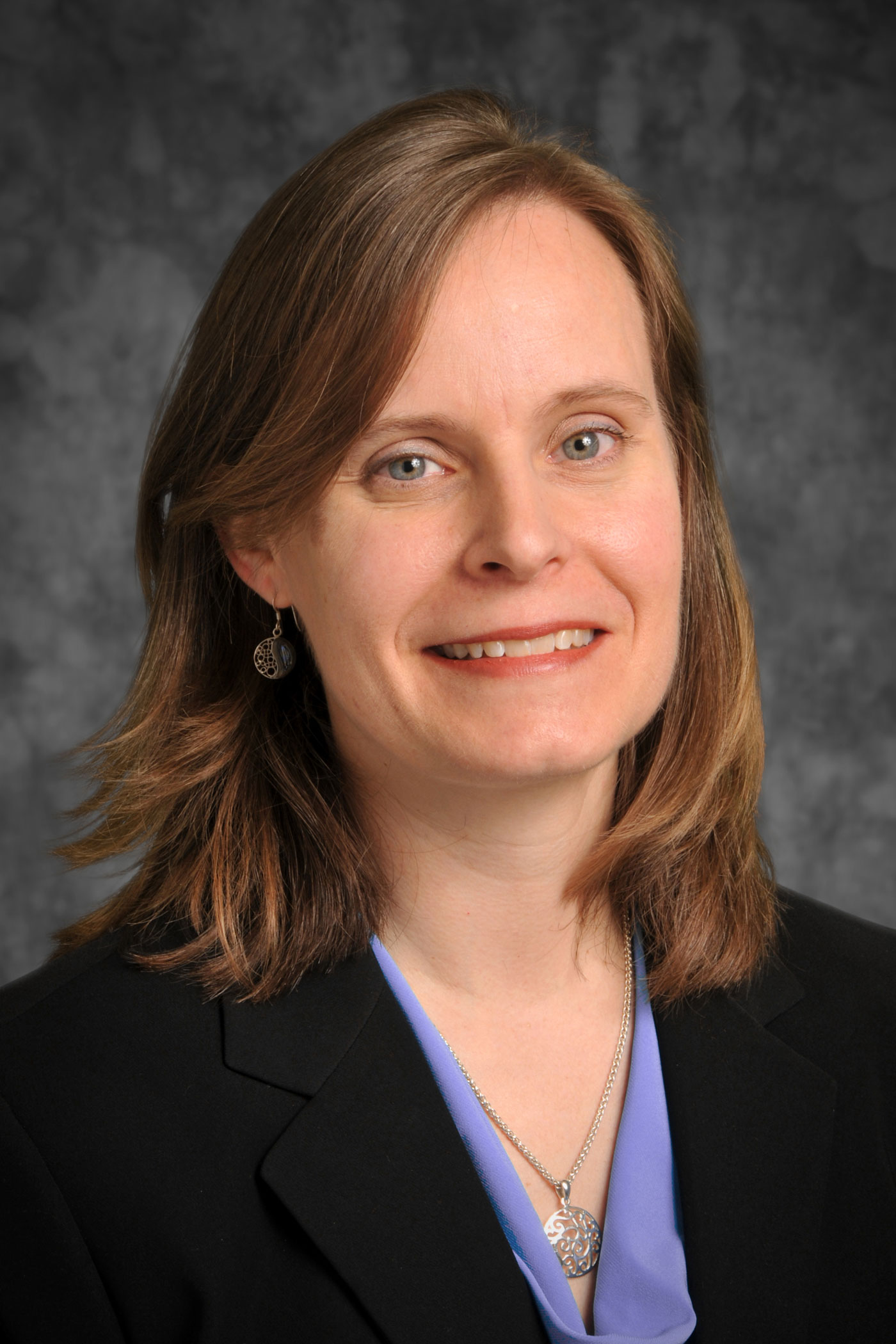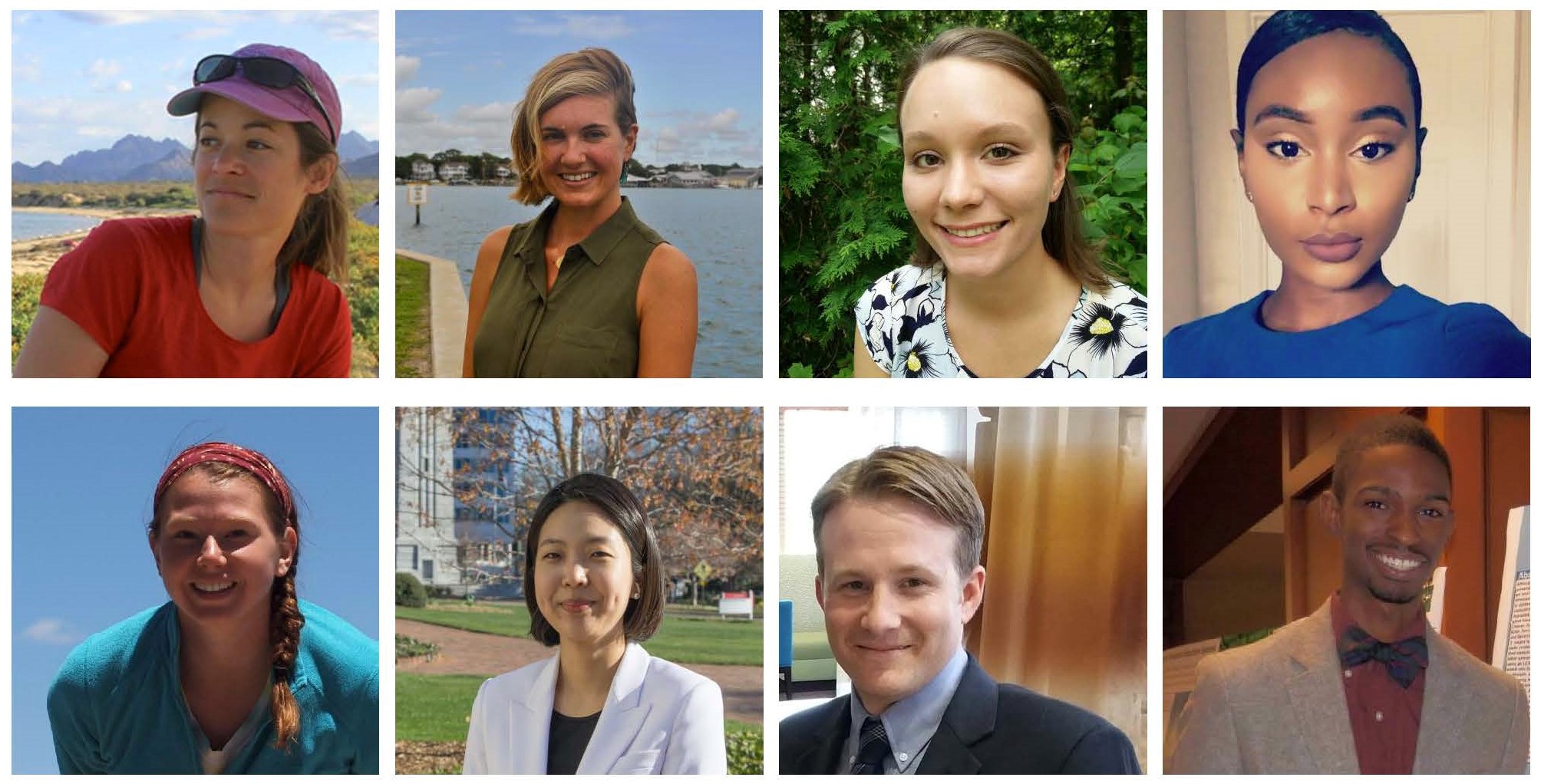“IT’S BORN IN US”: A Conversation with Barbara Garrity-Blake and Karen Willis Amspacher
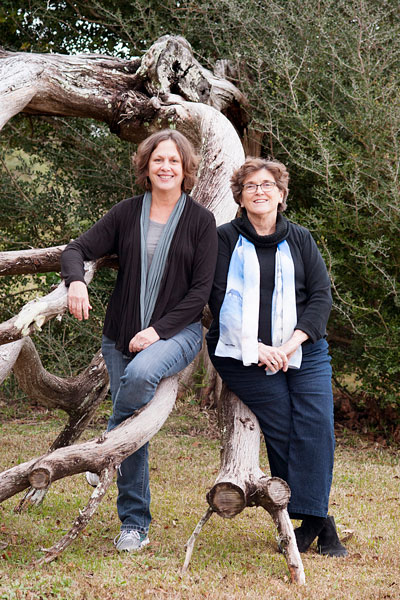
Barbara Garrity-Blake and Karen Willis Amspacher are co-authors of Living at the Water’s Edge: A Heritage Guide to the Outer Banks Byway, recently published by University of North Carolina Press.
The Outer Banks National Scenic Byway runs from Whalebone Junction in Dare County south to Beaufort in Carteret County. In their book, Garrity-Blake and Amspacher pause at porches, docks and local stores to reveal the stories, histories and traditions of the people and communities dotting this path.
They share tales of sea and sand, change and constancy, and a cadence of life that is unique to North Carolina — yet some say is fast disappearing.
Garrity-Blake is a cultural anthropologist long interested in the 21 communities along the byway. She lives in Gloucester. Amspacher, director of the Core Sound Waterfowl Museum and Heritage Center on Harkers Island, is a descendant of Shackleford Banks fishermen and boatbuilders. She lives in Marshallberg. Both are longtime partners of North Carolina Sea Grant.
These interviews have been condensed and edited. The printed magazine contains selected excerpts from their book.
Who should read Living at the Water’s Edge? What messages do you want readers to take home?
Karen Willis Amspacher: First of all, I hope the local folks whose stories we have tried to recount on these pages will take the time to read it carefully. I know how much I learned in the process and I believe that others who have “been here forever” will gain a better understanding of our communities and our shared connections.
Secondly and obviously, visitors who are truly interested in the history and culture of the Outer Banks would gain an entirely new perspective of this place. This is not a “where to go” type travel guide, but more of a scrapbook of memories and characters that give a glimpse of how the people here have lived, and continue to survive, in one of the most dynamic — and threatened — places along our coast.
What brought you together to write this book about the Outer Banks Scenic Byway region?
Barbara Garrity-Blake: For many years I’ve collected oral history recordings and conducted fisheries research along the coast of North Carolina, particularly in the byway region of Hatteras, Ocracoke and Down East.
Karen, in addition to her capacity as director of the Core Sound Waterfowl Museum and Heritage Center, was editor of two wildly popular publications that celebrated the history and traditions of Down East and C’ae Banks culture: the Mailboat journal and the Harkers Island United Methodist Church’s cookbook Island Born and Bred.
We’ve also worked together on numerous projects, including the community development initiative for the byway region called Saltwater Connections. Inevitably we joined forces for this heritage guide.
How does reading about a place add to the experience — before, during and after a visit?
Barbara Garrity-Blake: Reading about the history and culture of a place fleshes out a richer portrait that might otherwise remain invisible.
Something as simple as the name of a place often tells an interesting story. Why, for example, is the southern part of Hatteras Village known as Sticky Bottom? Prior to the digging of mosquito ditches, the neighborhood was a wet, marshy place where folks walked along planks and old Coca Cola crates to keep their feet dry. Travelers may wonder about a sign on Ocracoke Island that says, “Try Yard Creek.” That’s a reference to the days of “trying out” cetacean blubber for oil, namely bottlenose dolphins! Another fun fact: the Down East community of Marshallberg was once called Deep Hole Point because heavy, clay-infused mud was dug from Sleepy Creek and used to build the ramparts of Fort Macon.
In addition to the history of place names, an ever-evolving web of stories holds communities together. The oral tradition in which stories are shared — at fish houses, over coffee at the local store, on the sidelines of a Little League game — requires being in the right place at the right time, and a sharp set of ears!
In our book, Karen and I do our best to share snippets of stories as if travelers were having a “porch chat” with the locals. We also encourage visitors to slow down, spend time at the local harbor or beauty shop, and take in the wonderful storytelling skills and sense of humor so prevalent in these coastal villages.
Karen Willis Amspacher: To be honest, I’m not sure how anyone could make plans to visit a place like this without reading about it before, during and after the trip. Much has been written about the Outer Banks over the past 75 years, including David Stick’s classic Outer Banks of North Carolina, but I’m not sure there’s been an effort to connect these 21 communities before.
Having worked with the people all along the byway, it was obvious that the common challenges and shared traditions were more than a coincidence, but rather grounded in their shared way of life — fishing, waterfowling, lifesaving, island teachers, mailboat captains, boatbuilding. That’s what we tried to bring together, the stories of our shared past, as well as our hopes and concerns for the future.
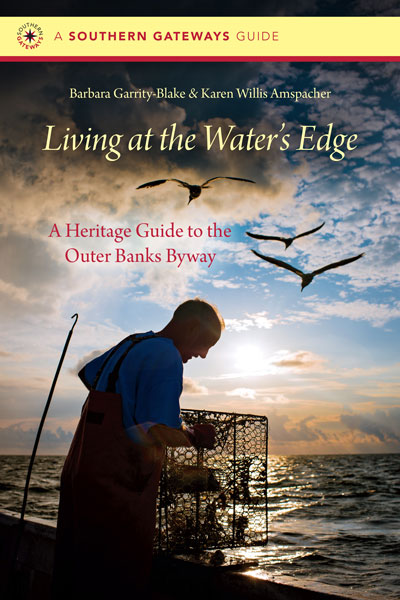
What challenges did you encounter when weaving together the distinct voices of the communities along the byway, while also giving a sense of the region as a whole?
Karen Willis Amspacher: It was almost impossible, and that’s where many of the hard decisions were made.
Every community has a boatbuilder, a grocery store, a storyteller and a midwife. How could we pick stories that are most unique to that community so that we were not telling the same story over and over? There are so many characters both past and present, how could we ever determine which ones would be most interesting to the readers, or most important to the communities? How could we treat each community fairly, give an accurate description to readers and also guarantee the locals that their favorite stories, heroes and community pride were all included?
We tried to scatter these stories across the book, both within the community sections, and in the themed sections that explored the common threads and shared experiences. I hope we were successful in giving those truly unique individuals and their stories a place in the narrative somewhere — there was just so much to tell!
The sad reality is that we left out more than we had room for because there are generations of strong men and women and no way to include them all.
How willing were people to tell their family history and stories, especially to readers who could be seen as outsiders?
Barbara Garrity-Blake: People with deep family roots recognize that their way of life is changing fast, and that the “old ways” may soon be overlooked or forgotten unless they are documented.
Fishermen in particular value in educating the wider world about their fishing methods, participation in research and management, and role as providers of fresh, local seafood. They are keen to correct any negative stereotypes about their occupation.
As far as locals having qualms about sharing stories with “outsiders,” many of the voices in our book are of locals who were once “outsiders” but became part of the community. People who live in places like Stacy or Frisco do so for a reason — they love the environment and the sense of community.
So it’s not a question of whether you are native or not — it’s a question of whether you appreciate the unique qualities of these coastal communities. People share their stories because they want readers to understand why they are so attached to this place, and why they don’t want it to be developed into the proverbial, generic “tourist trap.”
In what ways did being a Down East native support or prove challenging to your storytelling?
Karen Willis Amspacher: This was the most difficult part of the entire writing process because I felt personally responsible for each community and every person in those villages. I was very sensitive to the differences among the communities, and tried very hard to make sure that what we wrote and shared was in keeping with the values I know each community holds.
Even within the communities there are neighborhoods, churches and families that have their own way of thinking that adds to the fabric of these communities. They are all deserving of our respect and careful recounting of their role in our daily community life.
Over the past 20 to 30 years, these communities have all evolved into more diverse villages that change with the seasons, so there was much to consider in the selection of stories, characters and descriptions for each community.
Still, being from Down East gave me an understanding that no one could learn in a year or 10 years. “It’s born in us” as they say, this deep connection to the place and people and a strong desire to protect it and hold onto it, no matter what the sacrifice.
That was a common thread across all the villages of those who come from generations of Outer Banks people — a deep sense of pride and determination. I believe being from Down East, the least developed of the three regions, gave me a perspective that newcomers, no matter how long they’ve been here, cannot understand.
I tried to keep in mind that most of the readers will not understand much of what I grew up knowing. Our dependence on the water, our constant struggle with the weather, the family ties and the inborn knowledge of who we are. All of this is hard to explain to many who have never lived in a community so closely tied together.
What role did your cultural anthropology background play in collecting oral history and creating this book?
Barbara Garrity-Blake: I came to Carteret County working with Sea Grant as a marine policy fellow, and became fascinated with the now-defunct menhaden fishery. One of the first crewmen I talked to said, “Who in the world would be interested in working on a fish boat? Nobody cares about this!” We tend to take for granted the everyday things in our lives, to the point of not seeing what we do as interesting or valuable.
The “outsider” vantage point of an anthropologist helps draw attention to cultural details that a community might consider as natural as breathing. It’s such a gift, a privilege, to sit down with someone as they take the time to share their stories, thoughts and reflections.
What is the best advice you could give to folks visiting the North Carolina coast?
Karen Willis Amspacher: Slow down. Listen. Forget what you have heard and give the people here a chance to tell you their stories firsthand. Do your homework and take the time to soak up not just the beauty of these banks, but learn about the joys and perils, opportunities, and challenges of living here, and how those struggles have made the people of these communities strong, proud and determined to make a living, and a life, here.
Please realize this is “home” to them, not a place to visit. It is a place to live, work, raise a family and continue building — and sometimes rebuilding — a vibrant, sustainable community here in this beautiful place.
This article was published in the Autumn 2017 issue of Coastwatch.
For contact information and reprint requests, visit ncseagrant.ncsu.edu/coastwatch/contact/.
